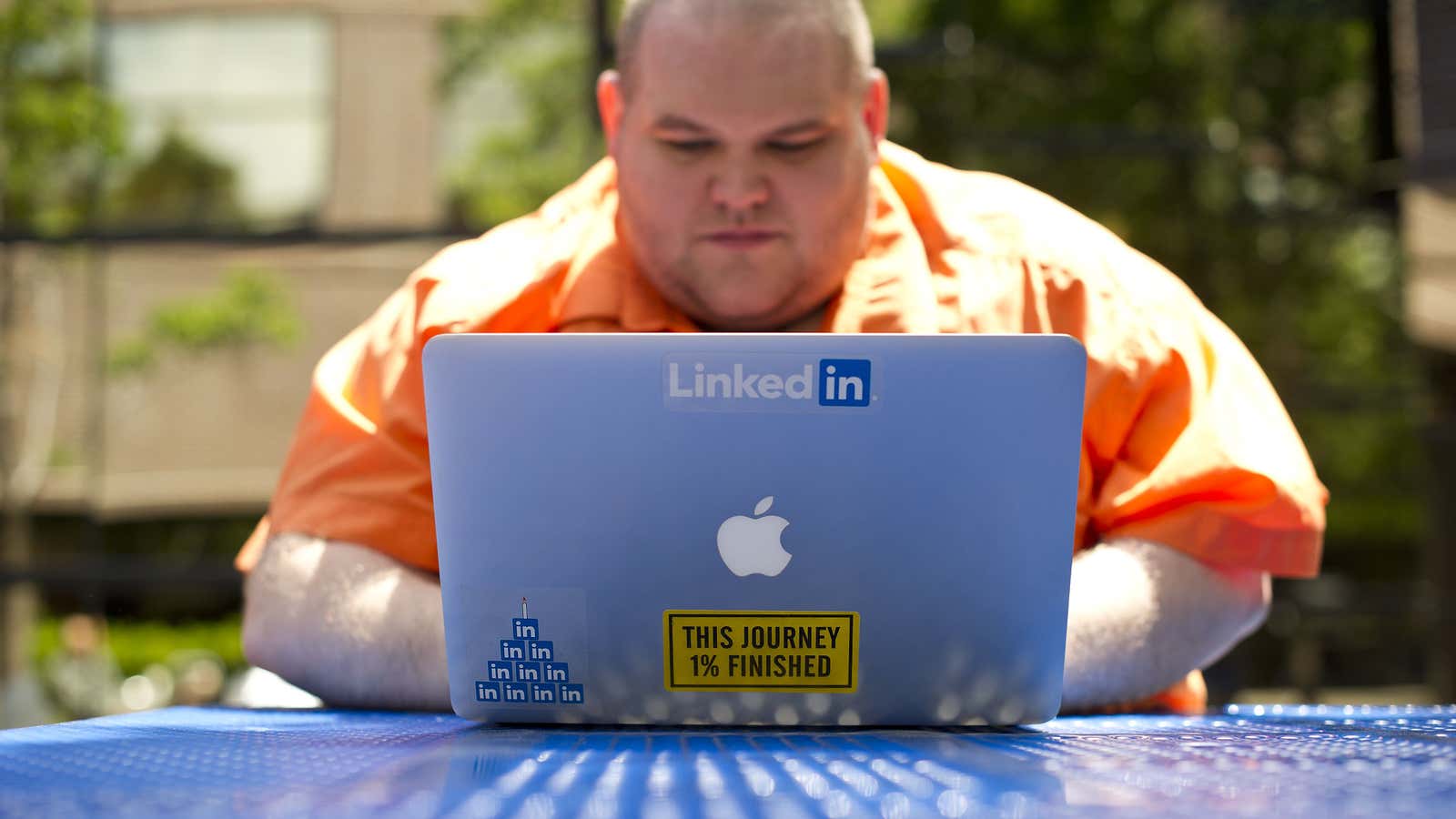Microsoft framed its planned $26.2 billion acquisition of LinkedIn as a way to improve its software offerings to businesses. And the deal is widely seen as helping Microsoft better compete with Salesforce in providing tools for companies to market and sell things.
The enterprise software and services rationale for a LinkedIn acquisition understandably seemed like a curveball to users who think of LinkedIn as a job board and resume site.
LinkedIn has been many things to many people over the years.
For some, it’s a social network that’s not as compelling or successful as Facebook. For others, it’s a professional recruiting tool—and selling services to recruiters is in fact how LinkedIn makes the bulk of its revenue. LinkedIn is a way to flatten the globe, connecting employers with individuals with specialized skills around the world who would have been unknown otherwise.
To others, it sits at a critical juncture for the future of education, as LinkedIn could be a platform for accessing nontraditional training services—such as those provided by LinkedIn’s recent acquisition, Lynda.com. LinkedIn allows individuals to display their credentials and helps employers feel comfortable evaluating training and experience beyond a university diploma.
And to some, LinkedIn is at least partly a media company. It purchased the Pulse newsreader service, steadily built up a stable of experienced journalists to generate and curate content, and courted luminaries such as president Barack Obama and Virgin’s Richard Branson to contribute interviews and writing to its site.
Now there’s Microsoft, which views LinkedIn as the world’s best database of professional contacts for users to tap into for selling things. There’s also LinkedIn as a source of data and information that can feed into your Microsoft calendar, word processing documents, emails, etc.
LinkedIn is the Rorschach test of Silicon Valley–you see in it what you want. You could argue that’s because LinkedIn is a platform whose value lies in the breadth of the ways in which businesses and professionals can use it. You could also argue that it’s because LinkedIn’s management has had trouble articulating what it is or wants to be.
What is LinkedIn really? That’s presumably now a question for Microsoft CEO Satya Nadella to decide. He has many options to choose from.
